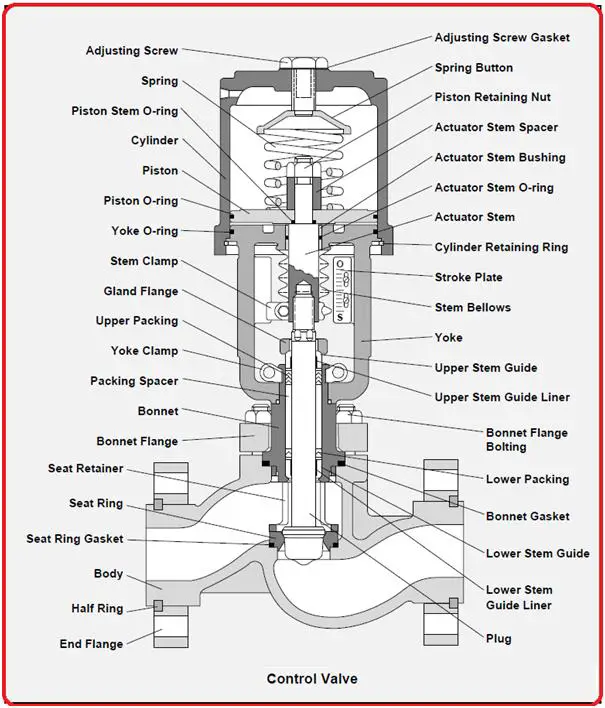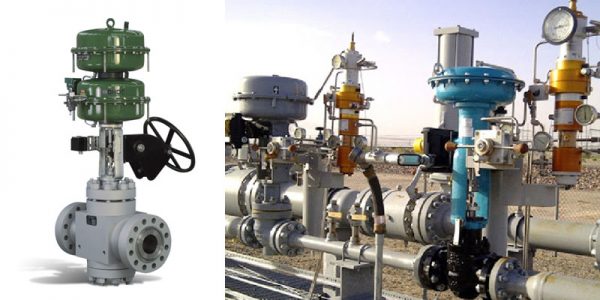Enhancing Functional Effectiveness with Advanced Control Valves
Achieve Seamless Assimilation and Control With High Quality Building Automation Controls
In the world of modern-day building monitoring, the relevance of high quality structure automation controls can not be overstated. As modern technology continues to development, the integration and control of numerous systems within a building have evolved to be a lot more innovative and reliable. The smooth operation and tracking of lights, HEATING AND COOLING, protection, and other structure features have actually become critical for improving owner convenience, power performance, and general operational performance. The journey towards attaining true assimilation and control is a complex one, with factors to consider varying from system compatibility to cybersecurity. Accepting quality structure automation controls is not merely an issue of convenience yet a strategic imperative for organizations aiming to maximize their facilities' efficiency and sustainability.

Evolution of Structure Automation Controls
Throughout the previous few years, the development of constructing automation controls has actually considerably transformed the way buildings are handled and operated. Building automation systems largely focused on basic functions such as managing heating, ventilation, and air conditioning (HVAC) systems. As technology progressed, these controls have actually come to be more advanced, permitting for a wider array of structure systems to be integrated and taken care of centrally.
The development of developing automation controls has seen a shift towards more smart systems that can adjust to altering conditions in real-time. This flexibility is critical for maximizing energy efficiency and making sure owner convenience. Additionally, contemporary structure automation controls currently use functions such as predictive upkeep, remote surveillance, and information analytics, enabling center managers to make data-driven decisions to boost building efficiency.

Advantages of Top Quality Combination
The development in structure automation controls towards even more smart systems has actually highlighted the considerable advantages of top quality integration in enhancing structure procedures and boosting general effectiveness. Quality assimilation of constructing automation controls supplies several key advantages. Firstly, it leads to improved energy performance by enabling different systems to function with each other flawlessly, guaranteeing optimal efficiency and decreasing energy wastage. Second of all, top quality combination enhances resident convenience and efficiency by enabling personalized control over ecological settings like lights, temperature level, and air quality. This modification can result in an extra favorable and comfy working or living atmosphere. Furthermore, top quality assimilation simplifies upkeep and repairing processes, as all systems are adjoined and can be checked and managed from a central user interface. This centralized control also offers much better exposure and understandings right into structure performance, allowing positive upkeep and optimization methods. Overall, the benefits of high quality integration in building automation controls are indisputable, using raised performance, comfort, and operational effectiveness.
Improved User Experience and Accessibility
Enhancing customer communication with structure automation controls via intuitive design and boosted ease of access boosts the overall experience for occupants and facility supervisors alike. By concentrating on individual experience, building automation systems can end up being extra easy to use and efficient. Instinctive interfaces, clear navigating, and customizable settings equip users to communicate with the controls quickly and properly.
Ease of access about his attributes play a critical duty in making sure that all people, including those with disabilities, can use the structure automation controls easily. Including features such as voice commands, tactile switches, and color-contrasted screens can boost ease of access and make the controls a lot more comprehensive.
Furthermore, enhanced customer experience brings about higher individual contentment, increased performance, and better decision-making. Residents can change ecological settings according to their preferences, while facility managers can efficiently take care of and check structure systems - control valves. In general, focusing on individual experience and availability in building automation controls adds to a much more efficient and seamless building environment for all stakeholders involved
Lasting Practices With Automation

Furthermore, automation can help with the assimilation of renewable energy resources such as solar panels or wind turbines into building procedures. Via automation, buildings can align with contemporary sustainability goals and contribute to a greener future.
Future Trends in Building Control Systems
One popular pattern shaping the future of building control systems is the boosted combination of Artificial Knowledge (AI) and device knowing. In addition, the Web of Things (IoT) is revolutionizing structure control systems by connecting sensors and tools to enhance operations and improve efficiency.
One more from this source essential pattern is the focus on cybersecurity procedures to safeguard against possible risks to building automation systems. As structures become more interconnected, ensuring robust cybersecurity protocols will be necessary to guard delicate data and prevent unapproved access.
Moreover, the shift towards cloud-based systems is gaining momentum, allowing for centralized control and remote access to building systems. This assists in much easier monitoring, maintenance, and updates, boosting the total performance and flexibility of structure control systems. As modern technology remains to advance, these fads are anticipated to form the future landscape of structure automation controls, driving innovation and sustainability in the constructed environment.
Final Thought
To conclude, constructing automation controls have actually developed substantially, offering many benefits such as boosted user experience, accessibility, and sustainable methods. Quality assimilation plays an essential function in achieving smooth control and reliable operation of building systems. Future fads in structure control systems are most likely to concentrate on more boosting automation capabilities for boosted power efficiency and general efficiency. It is vital for structure proprietors and operators to focus on the fostering of top quality structure automation controls to maximize building procedures and attain lasting sustainability objectives.
In the realm of modern building administration, the value of high quality building look at here automation controls can not be overemphasized. Overall, the evolution of structure automation regulates proceeds to drive innovation in the building management sector, supplying new possibilities for creating smarter and much more sustainable structures.
The advancement in building automation controls in the direction of more intelligent systems has emphasized the significant advantages of high quality assimilation in maximizing building procedures and improving total effectiveness. Overall, prioritizing user experience and accessibility in building automation regulates contributes to an extra smooth and effective structure environment for all stakeholders entailed.
It is vital for building proprietors and drivers to focus on the adoption of quality structure automation manages to optimize building procedures and accomplish lasting sustainability objectives. - control valves